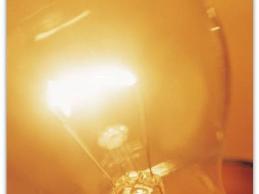From the desk of Teresa Goddard, M.S., Lead Consultant – Assistive Technology Services
Keratoconus, sometimes abbreviated as KC, is an eye condition in which the shape of the eye changes causing blurry, cloudy, or distorted vision as well as sensitivity to light and problems with glare. Many people with keratoconus have a history of nearsightedness as well. In fact, some individuals first learn of their condition through evaluations to see if they are a candidate for LASIK surgery. Vision impairment from keratoconus may be relatively mild at first and is often treated with eyeglasses or contact lenses at the early stages. In some cases, those with keratoconus may be fitted with custom contact lenses that are specially made to correct their vision and are fitted to their unique eye shape. As the condition progresses, other treatments such as surgery to apply corneal inserts or treatments to reshape the cornea in other ways or corneal transplants may be needed.
The changes in eye shape in people with keratoconus result from weakening of the tissue of the cornea, the clear tissue covering the front part of the eye. As the tissues weakens it also becomes thinner. The thin parts of the affected cornea then begin to bulge forward forming a cone-like shape. Keratoconus is a progressive eye condition, meaning that the changes in the shape of the eye tend to become more pronounced over time resulting in continuing changes in vision. Most people who develop keratoconus in one eye, will also eventually develop keratoconus in their other eye too. When both eyes are affected, the condition may progress at different rates in each eye. The changes may be gradual or more sudden. Even though keratoconus is generally considered to be a progressive condition, changes in eye shape sometimes stop before more invasive treatments are needed.
Every person with keratoconus is different. Some employees with this condition, particularly those who are in the early stages, may not need any accommodation apart from time off for treatment or monitoring of their condition. Others may be able to self-accommodate if given flexibility to adjust the lighting near their workstation. Generally speaking however, accommodation needs of employees with keratoconus are likely to be similar to those of employees with other conditions resulting in low vision and photosensitivity.
As for photosensitivity, accommodating a person who is sensitive to light can take quite a bit of trial and error. It can be challenging to get enough light to work without triggering sensitivity symptoms. If the person knows what types of lighting and lamps work for them in other settings, there is a chance that similar lighting arrangement might be helpful at work. Below are suggestions that JAN consultants often make regarding accommodations for photosensitivity in office settings.
- Consider allowing telework for some or all of the week so that the employee may work in a setting where he or she can more easily control lighting.
- Consider use of floor to ceiling cubical walls so that fluorescent light is blocked from reaching the employee's work station. Other options to block out overhead lighting include an office with a door, a cubicle roof, or even a patio umbrella installed over one's desk.
- Consider installing filters in fluorescent light fixtures to reduce the negative effects of fluorescent lights. Turning off overhead lights and using lamps may allow more control over lighting, especially for employees who need to work in low light.
- Consider use of full spectrum lighting to supplement natural light near employee's workstation if the individual does better with natural or full spectrum light. If the individual is sensitive to full spectrum, natural light, or UV, consider other options.
- For individuals who are sensitive to flickering, consider use of alternative lighting such as incandescent or LED lighting.
- Consider modifying dress codes to allow the employee to wear items to help reduce the effects of fluorescent light, such as sunglasses or hats with brims.
- Explore accommodations to enhance concentration such as reducing background noise or allowing the employee to listen to music through headphones while working.
- If the person does better with natural light, try to place him near a window.
- If the person needs more control over the light in his workspace or is sensitive to UV, windows can be problematic. Consider moving the person away from windows or installing appropriate window coverings.
At later stages of keratoconus, more time off for treatment and recovery from surgeries may be needed. Another accommodation that may be needed as the condition progresses is a modified schedule to allow for use of public transportation or other means of alternative transportation or to accommodate limitations related to night driving. Depending on the situation, telework may be another accommodation to consider when commuting issues arise.
For more information on accommodating employees with keratoconus, please contact JAN.
Resources:
- MedlinePlus A service of the U.S. National Library of Medicine National Institutes of Health. (2002). Retrieved October 29, 2014 from http://www.nlm.nih.gov/medlineplus/ency/article/001013.htm
- NKCF National Keratoconus Foundation. (2014). http://www.nkcf.org/


